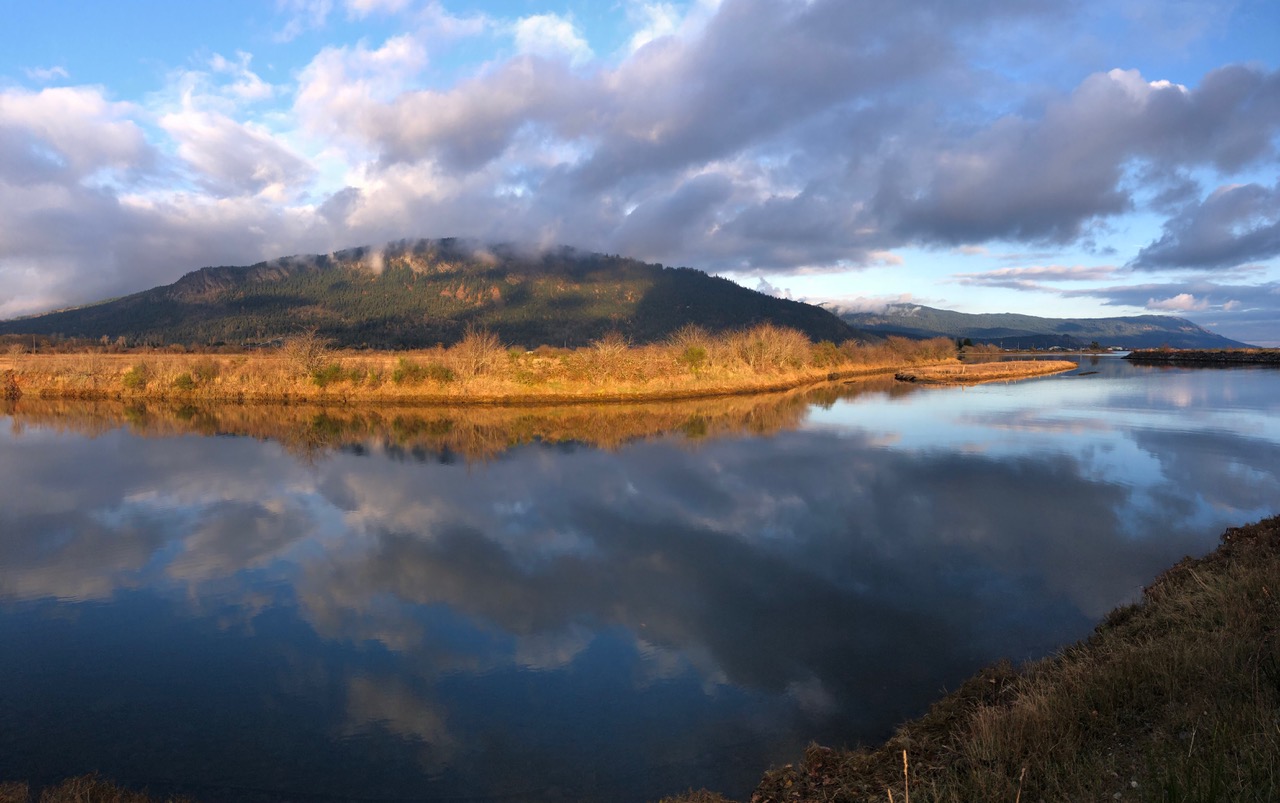


It nearly got us, but the rain moved around the 5+5 birders that took part in the count this week, I say 5+5 because only 5 left the dog park, 4 were found at A&W and one hitched a ride at the farmers market south of town, what a crew I have too work with. Yes it was nice to have you out with us Genevieve, but alas, late comers get stuck in the middle of the back seat.
This week we had almost an identical number of swans as last week and the gooseys went up 100 or so.
We encountered 4 Turkey Vultures this week, new migrants, some more Anna’s Hummingbirds, a Horned Grebe on Somenos Lake was a good find. Tree Swallows tending a nest hole at the foot of Drinkwater Road, a Pileated Woodpecker (see attachment) on a dead snag on Koksilah Road and a lovely Red-breast Sapsucker on Tom Windsor Drive. We had the Sandhill Crane on Sahilton Road and one of the counters had the American Kestrel at the Exhibition Grounds, you see we are not all about counting. 4 Mute Swans were back on Somenos Lake and I guess it wont be long before they start their annual breeding somewhere around the lake.
We had great looks at two Tundra Swans this week and a strange encounter with a couple of Trumpeters with pouches under their bills (see attachment), I can honestly say I have never seen this before and we had two the same. Any thoughts on this strange lump would be welcomed.
Another oddity is the number of immature Bald Eagles for the fourth straight week we had 6 and for the seventh straight week an average of 6, I think they look out for us and then leap up in the trees to be counted.
In the vehicle that I was in we had three photographers in the back and the number of times I had a zoom stuffed in the back of my neck, I also thought they were going to come to blows as one after another they jostled their lens out of the window, Wendy seemed intent of stopping Barry getting his big zoom out the window, poor fellow stuck in between the ladies, I was even accused of having my big head in the way, well excuse me, but I was the one counting and this week doing the tally as the part-timers got out of the job.
At the end of the day we had all had good looks at some wonderful birds and our numbers were very respectable.
The majority of the swans were in the south end of the count circle, but it was nice to see a group back on Quist’s farm, not that the farmer would be pleased.
We are now on the home stretch with just two more counts to go, it will be sad to see the swans go as they all move north, yet there will be many new species of birds to take their place as spring migration is just around the corner, or has it started already, I have a male Rufous Hummingbird regularly visiting my feeder and Yellow-rumped Warblers are resplendent in the bright spring plumage in the local birding spots.
We were reminded by a member of the local first nations band about the disturbance of swans in the Boys-Sahilton Road areas as a few swans had flown up and hit the hydro wires, I would encourage anybody taking pictures or watching the birds to stay in your vehicle as this serves as a great bird blind and will not frighten the birds and their safety has to come first..
With all this wonderful weather we are getting you would think that this would be a precursor for our swans to leave early, well it is obvious with the numbers that we are getting that it’s not the weather that excites these big white birds to head north. Could it be that they have to reach a certain weight before they can leave or maybe that the immature birds are strong and healthy to live on their own when they get north. I guess we will never know what triggers them to leave and which one of the 800 or so swans here in the valley makes that decision, is it a team effort?
Big thanks to Barry and Kurlene for their excellent photos
Happy counting.
Derrick
Washington Swan Stewards
The Trumpeter Swan Society
PMB 272, 914- 164th St SE
Mill Creek, WA 98012
office: 425-787-0258

